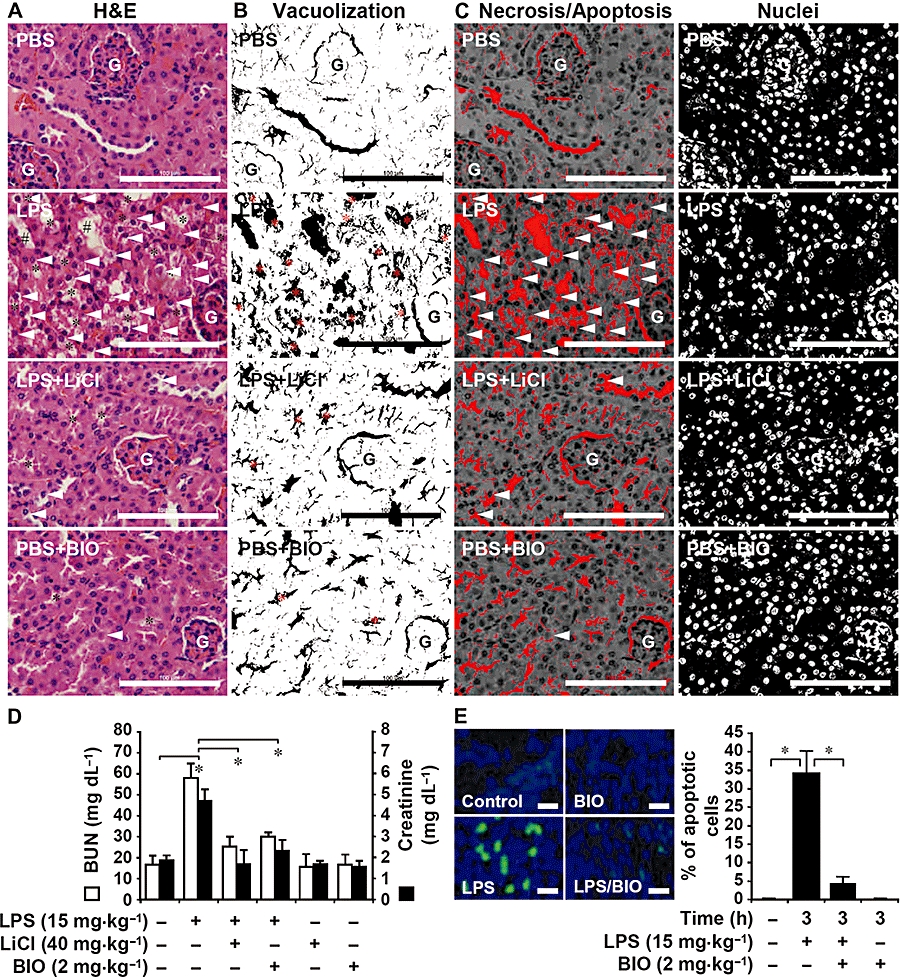Figure 2.

Glycogen synthase kinase-3 inhibitors reduce lipopolysaccharide (LPS)-induced nephrotoxicity in C3H/HeN mice. The mice were injected with LPS (15 mg·kg−1 i.p.) with or without lithium chloride (LiCl) (40 mg·kg−1) or 6-bromo-indirubin-3′-oxime (BIO) (2 mg·kg−1) co-treatment. (A) Twelve hours post-treatment, the mice were killed and their kidneys were removed and prepared in sections for haematoxylin–eosin staining. Compared with phosphate-buffered saline (PBS)-treated control mice, histopathological changes of vacuolization (*), brush border attenuation and sloughing (#), and necrotic/apoptotic cells (arrowheads) were significantly greater in the LPS-treated group than in the LPS + LiCl group. Data are representative of three mice. G, glomerulus. Scale bar is 100 µm. The area of vacuolization (*) (B) and the generation of necrotic/apoptotic cells (arrowheads) were determined (C) by morphometric analysis using ImageJ software version 1.41o. For numbers of nuclei, the total number of cells in the observed fields was counted. (D) Concentrations of blood urea nitrogen and creatinine were determined in sera. Data, obtained from three mice, are means ± SD *P < 0.05. (E) Three hours post-treatment, the mice were killed, and their kidneys were removed and prepared in cryosections to detect cell apoptosis using terminal deoxynucleotidyl transferase (TdT)-mediated dUTP–biotin nick-end labelling staining (green). 4,6-diamidino-2-phenylindole was used for nuclei staining (blue). Data are representative of three mice. Scale bar is 75 µm. The percentages of apoptotic cells were calculated, and data, obtained from three different areas, are means ± SD *P < 0.05.
